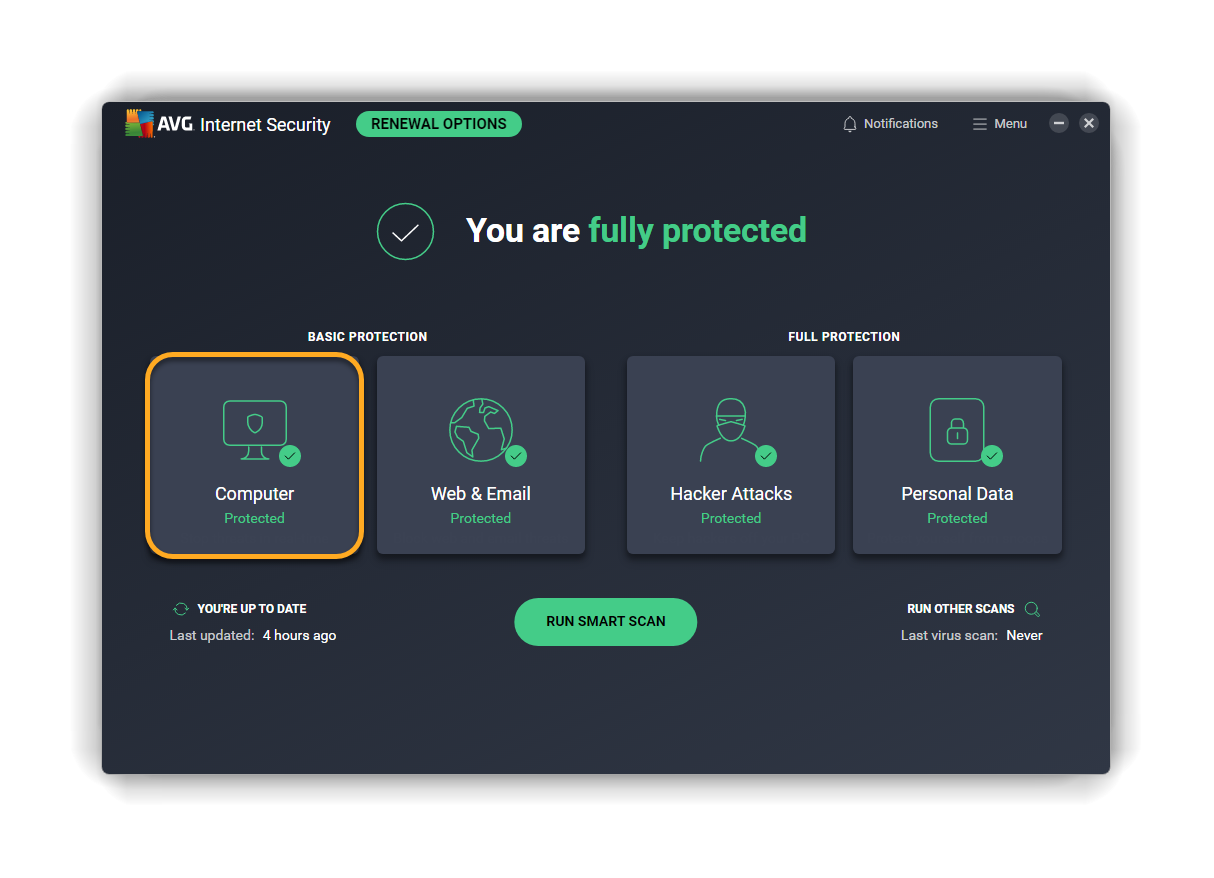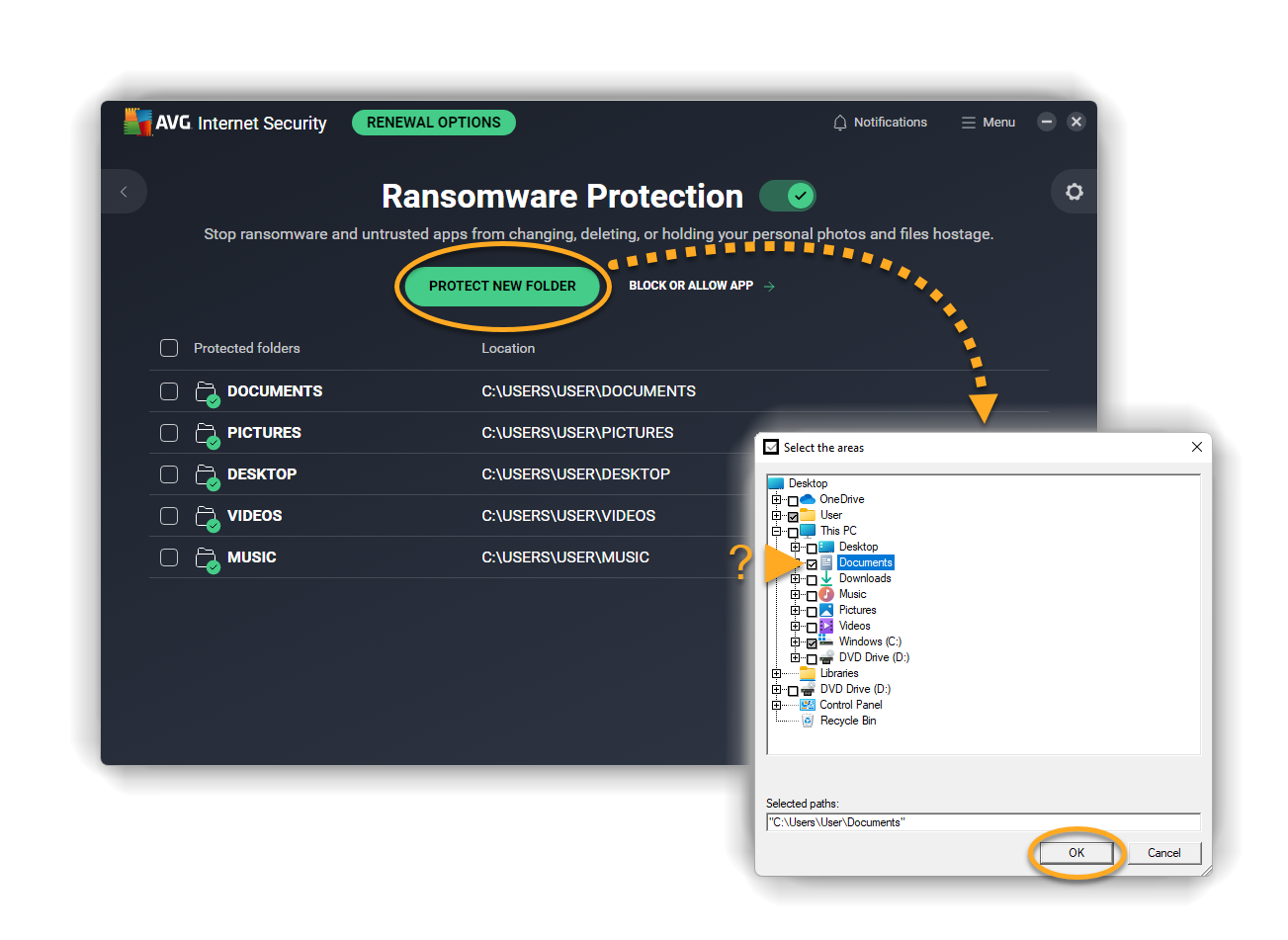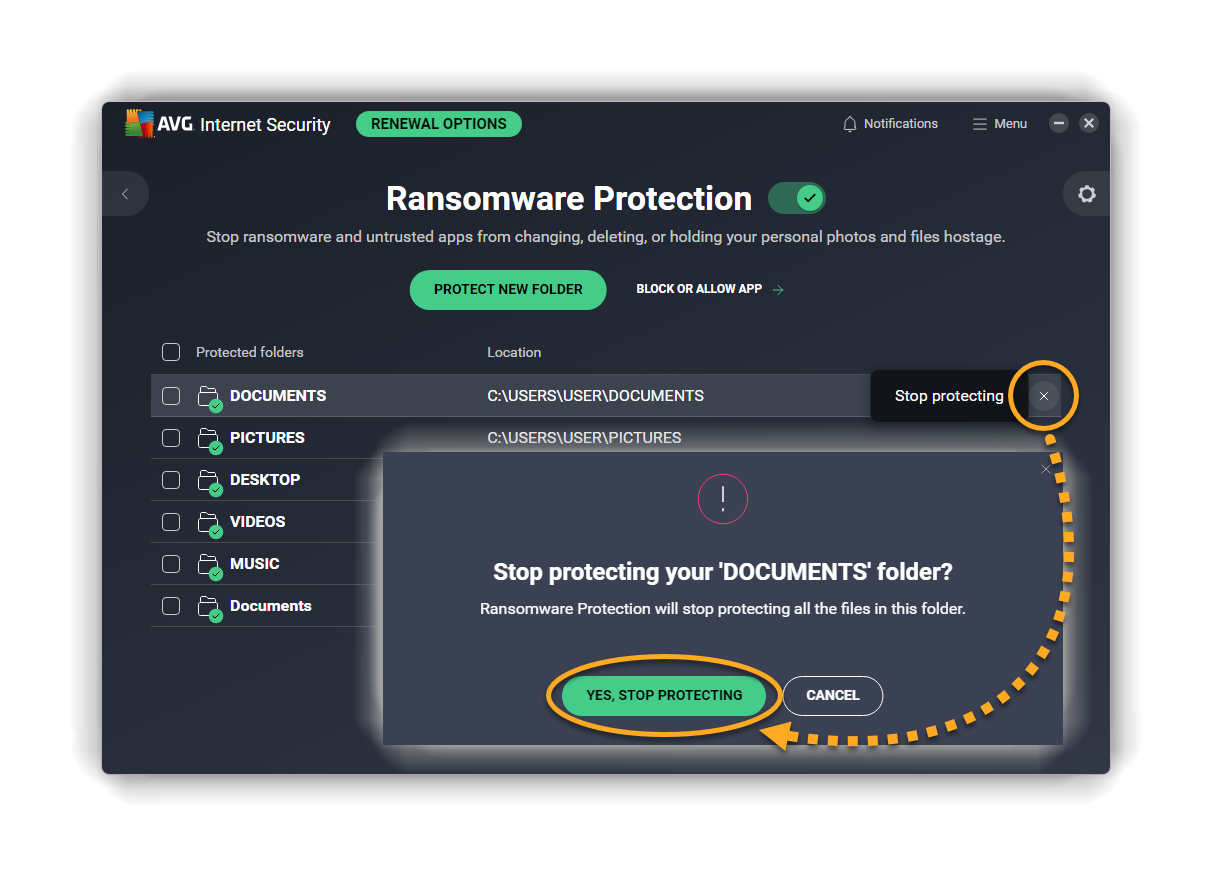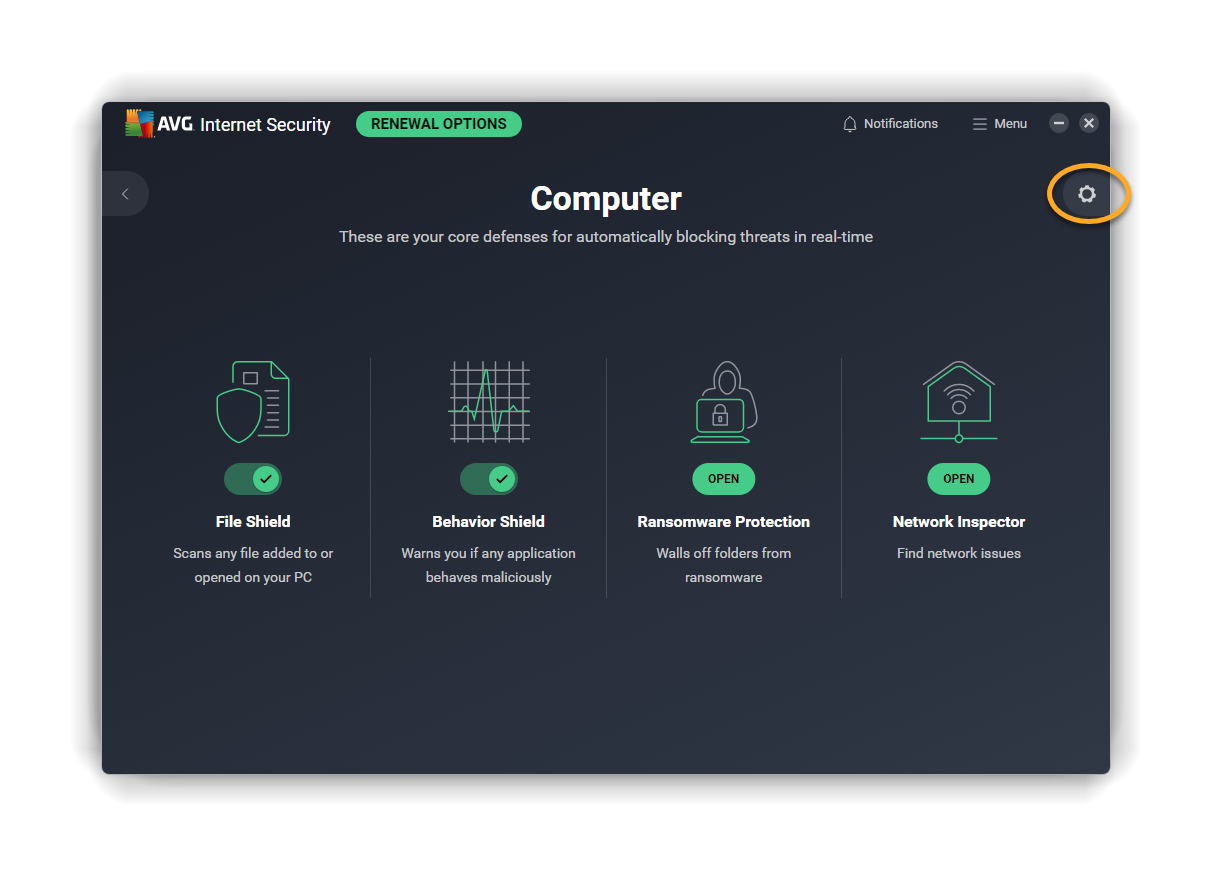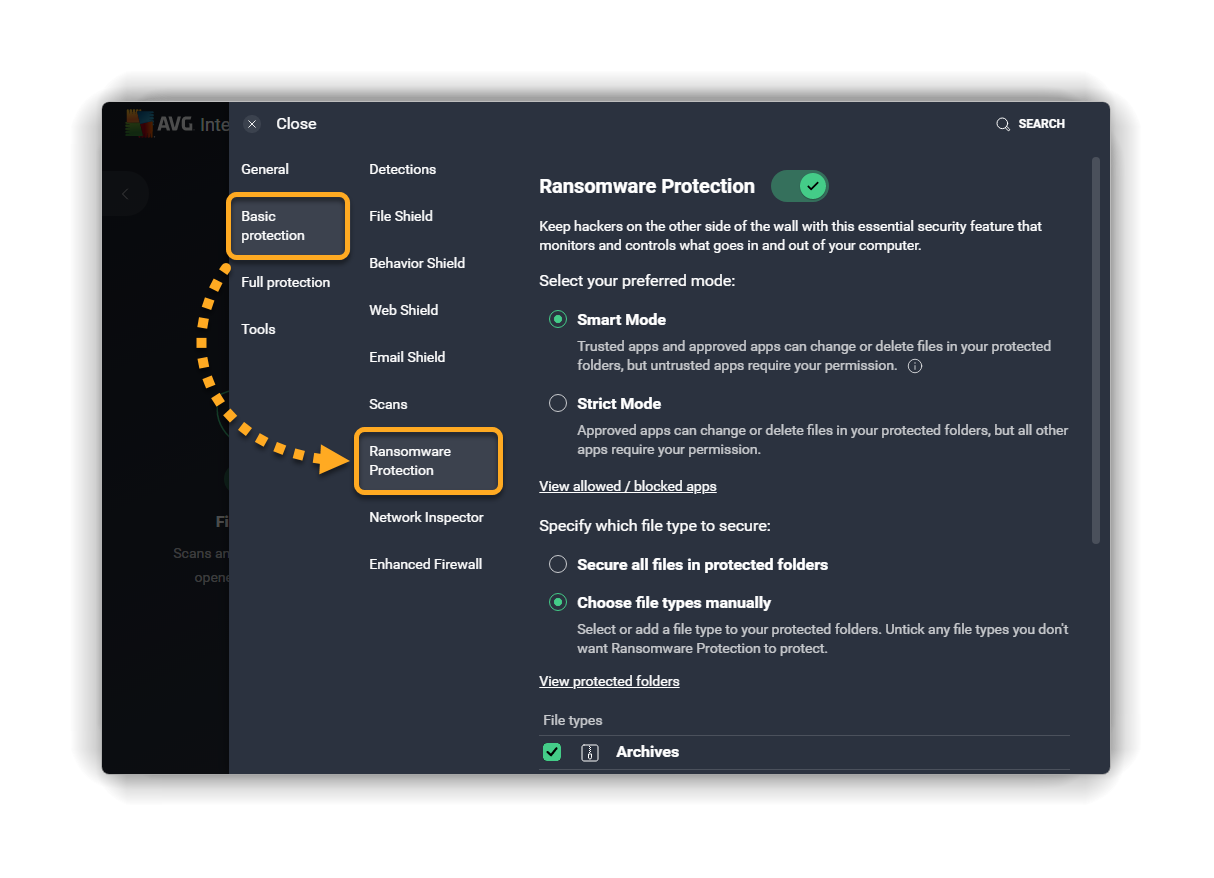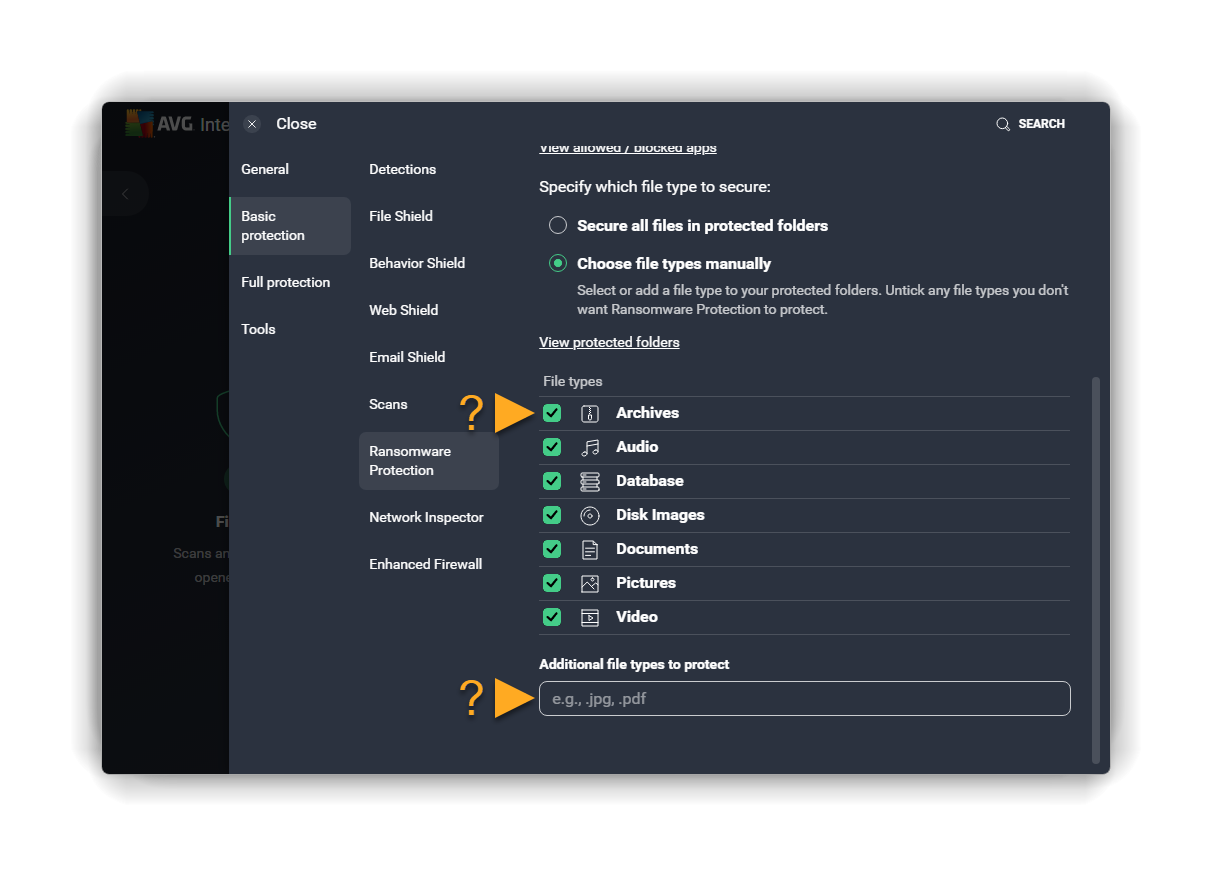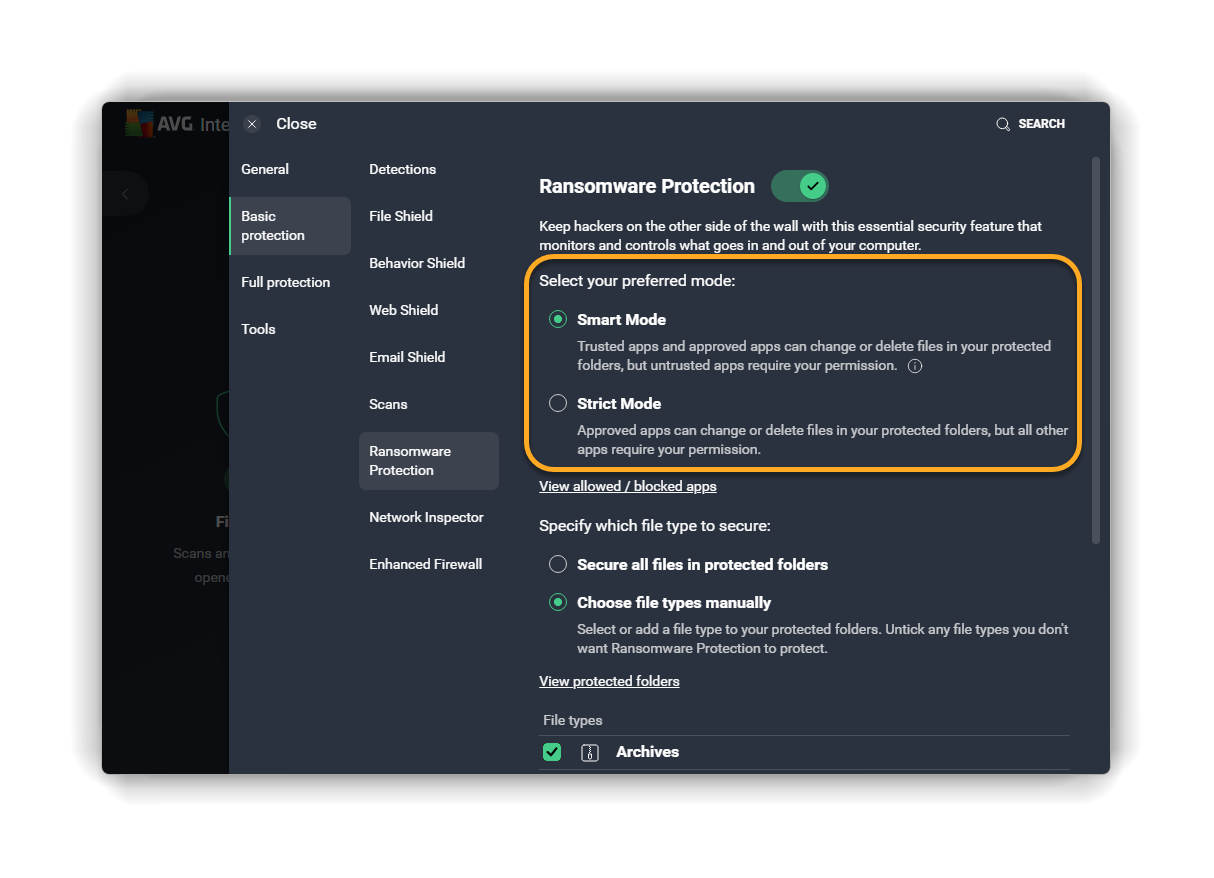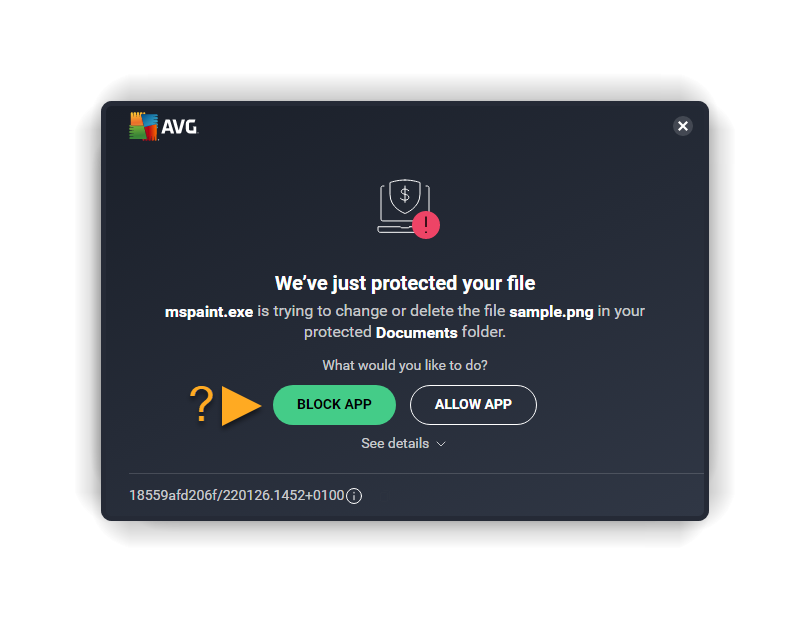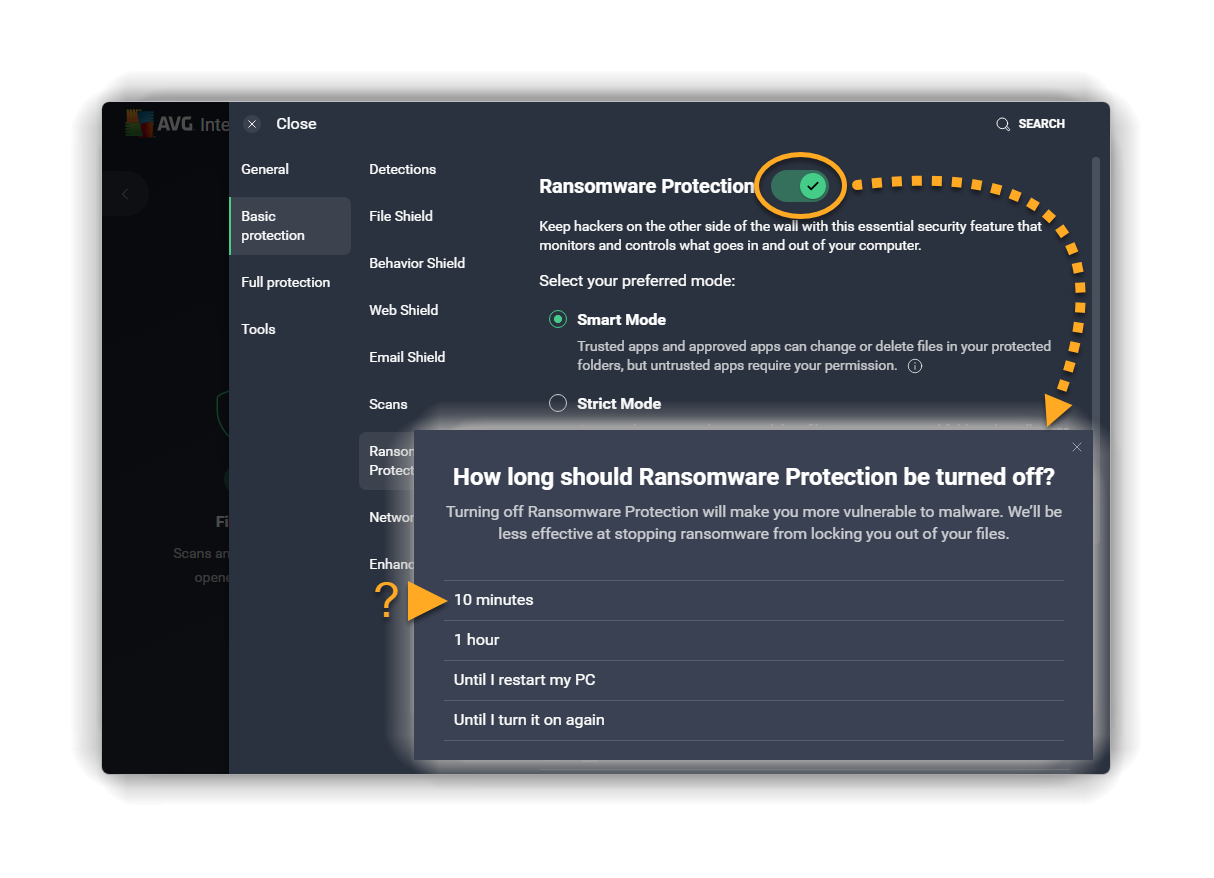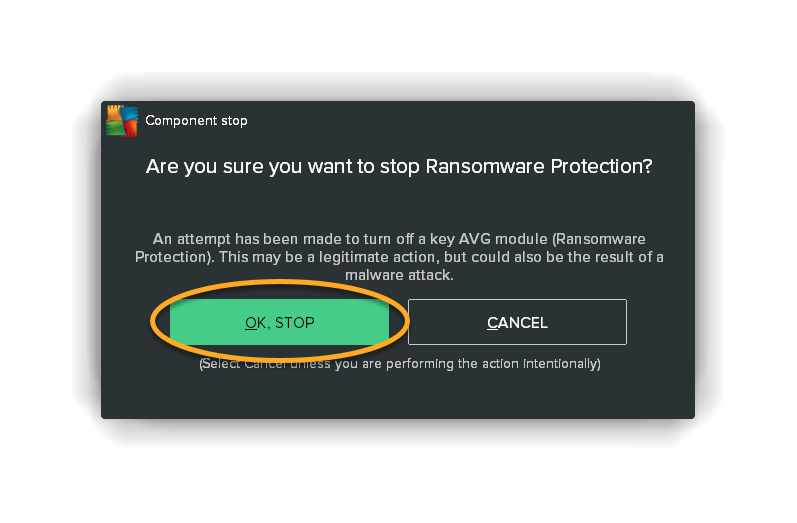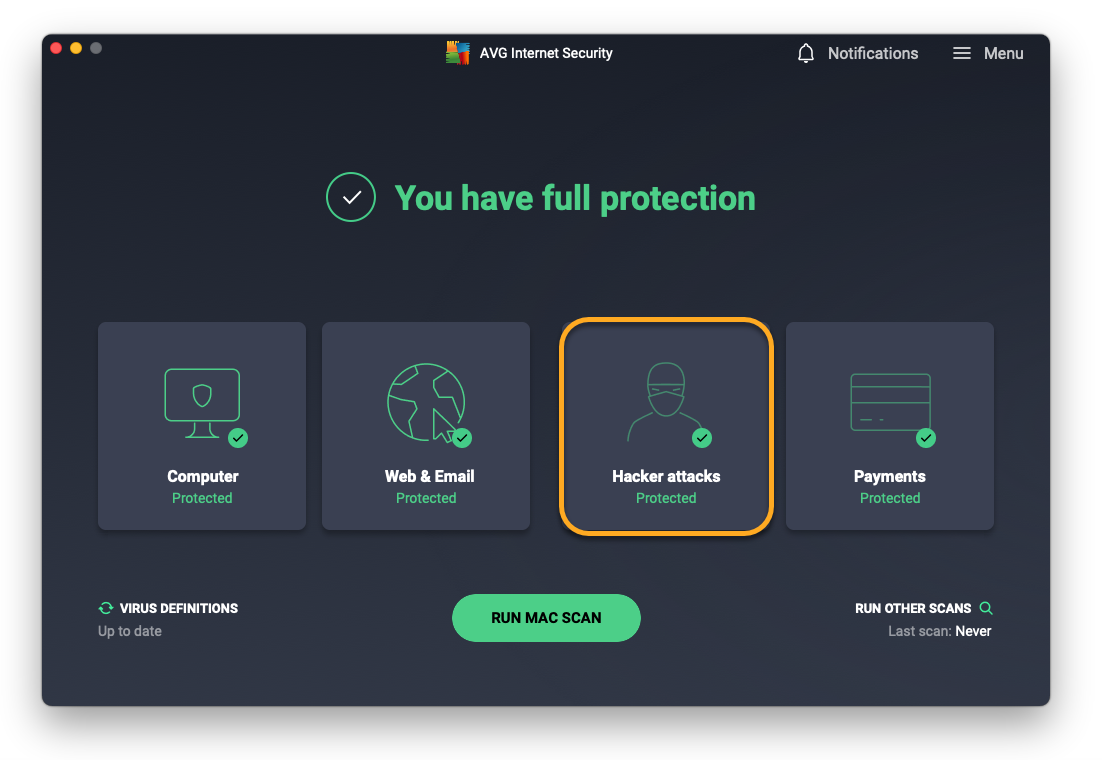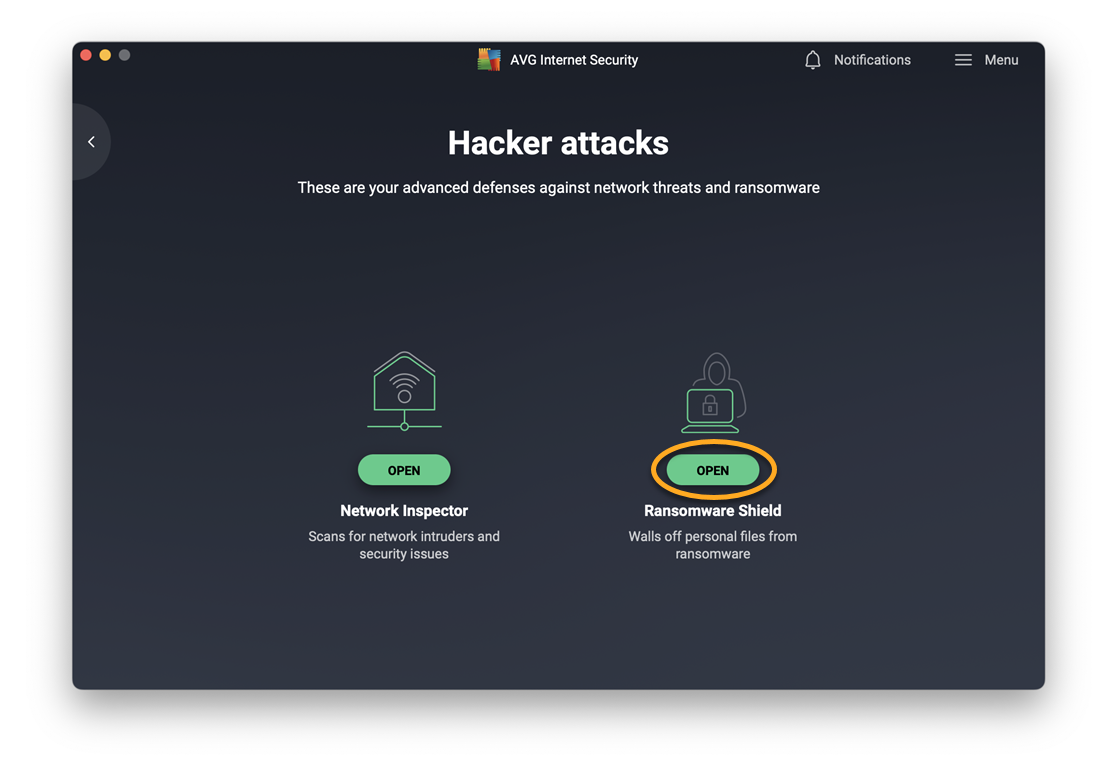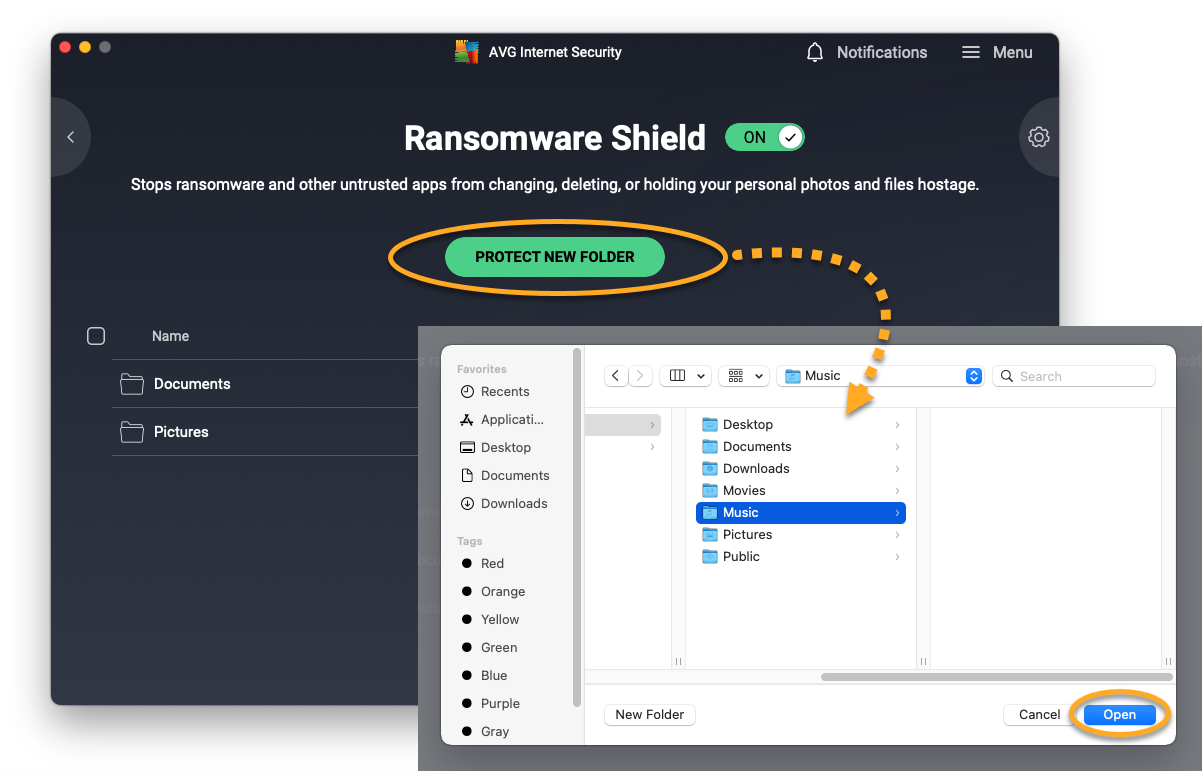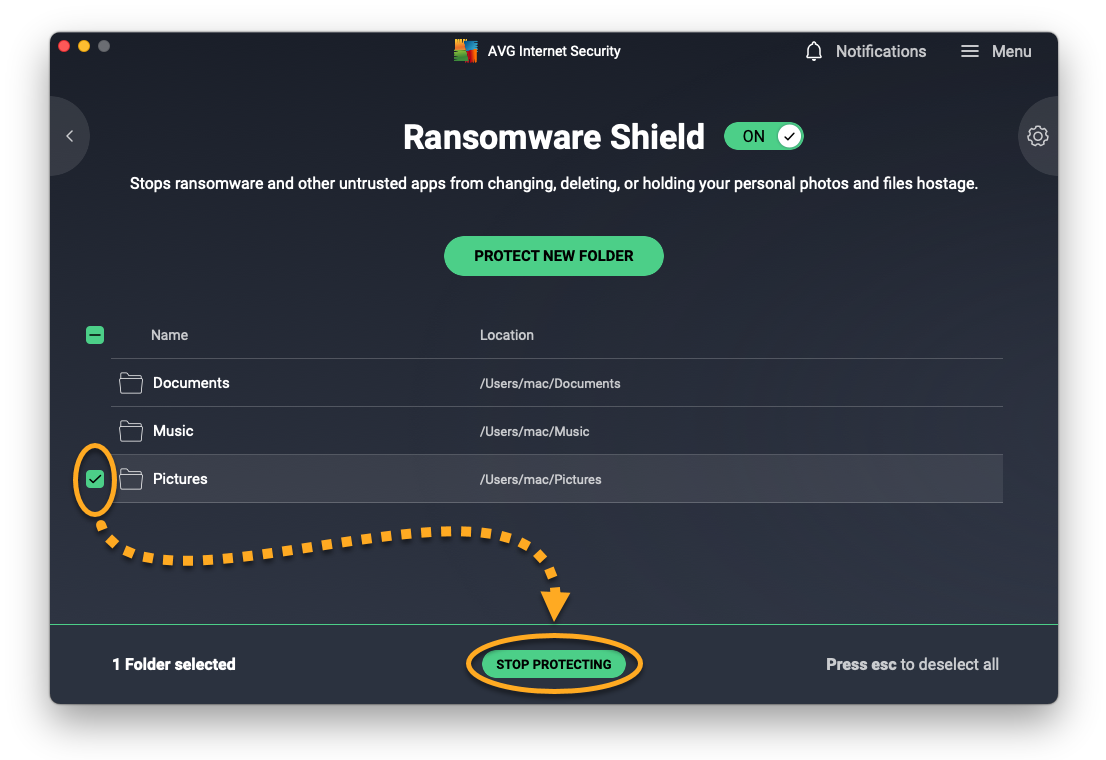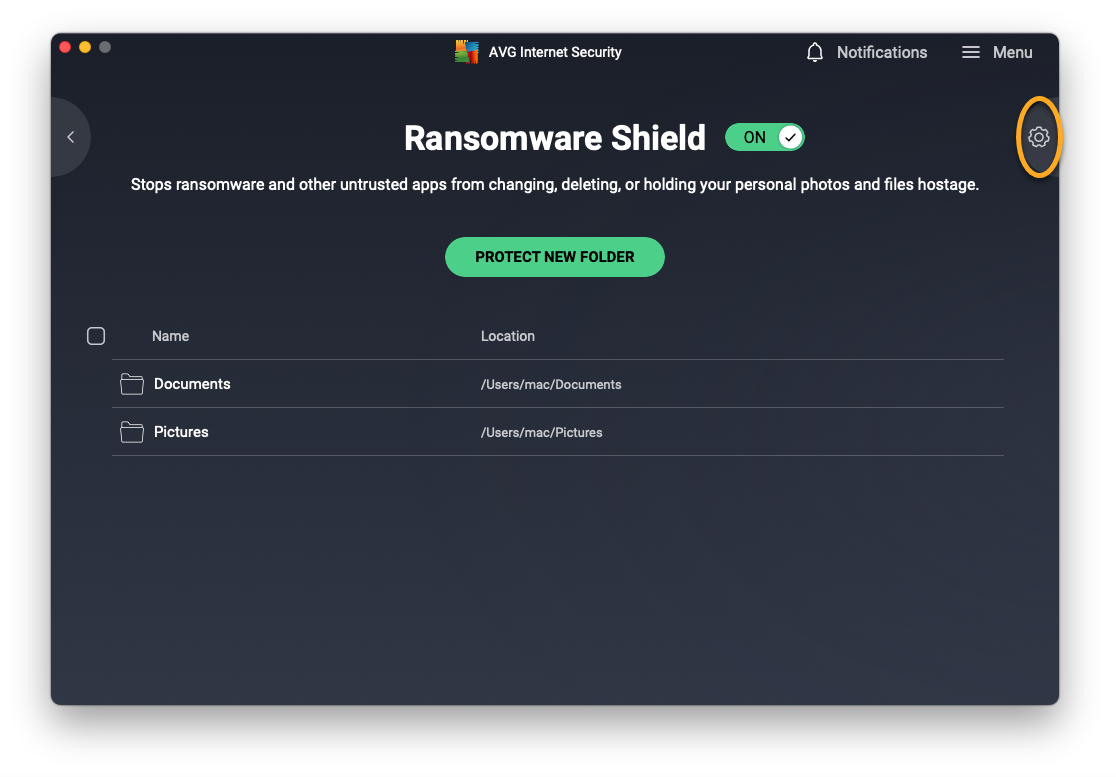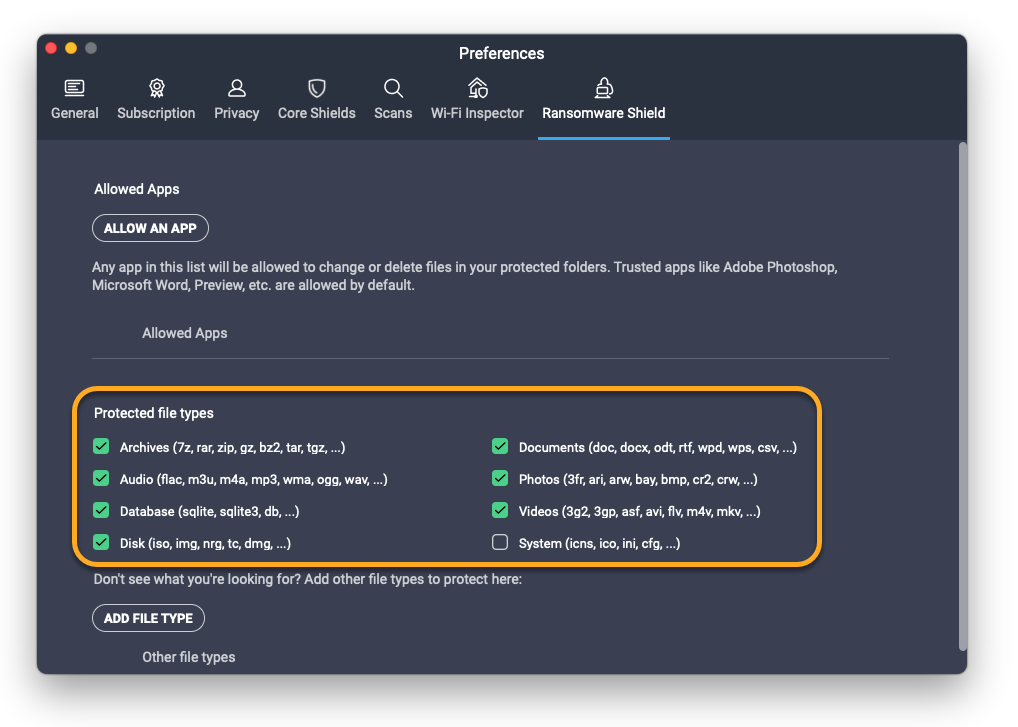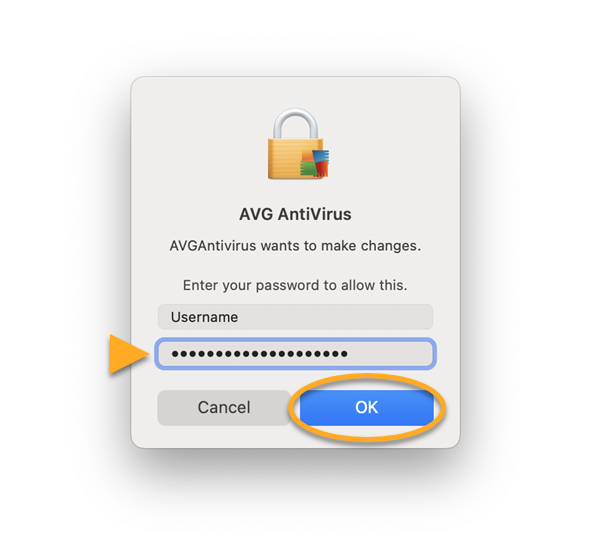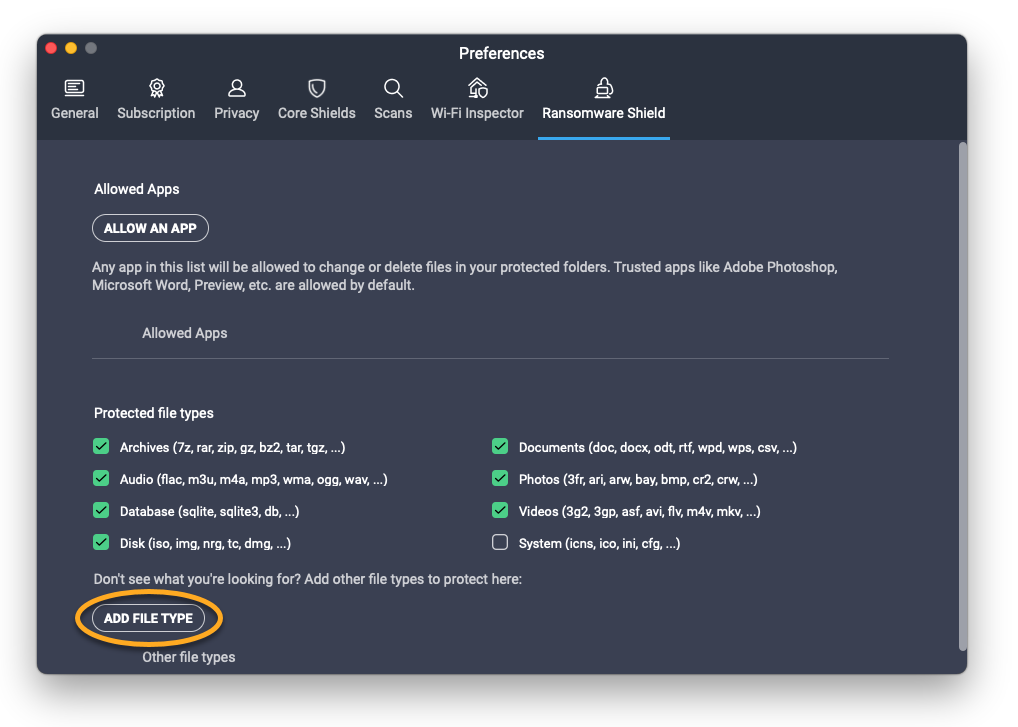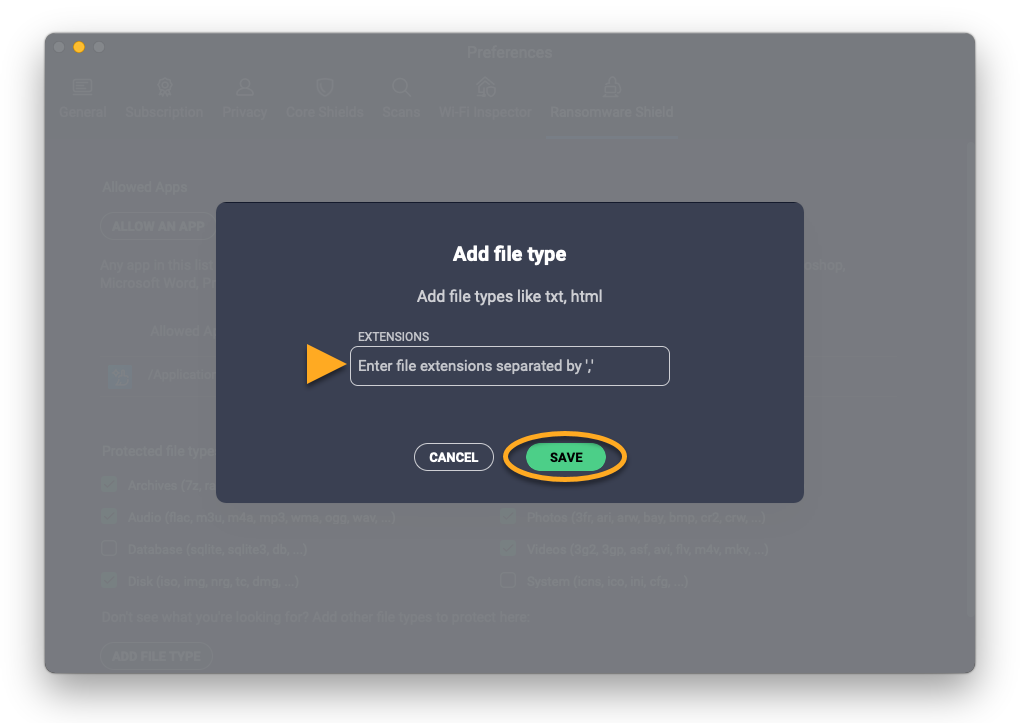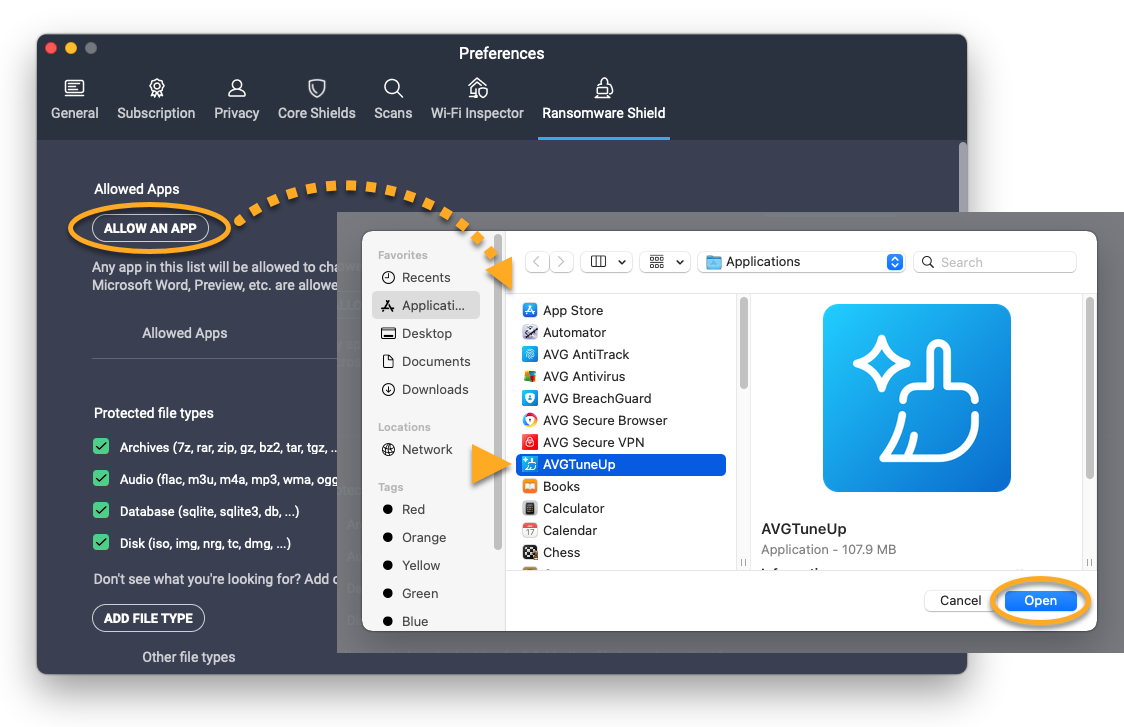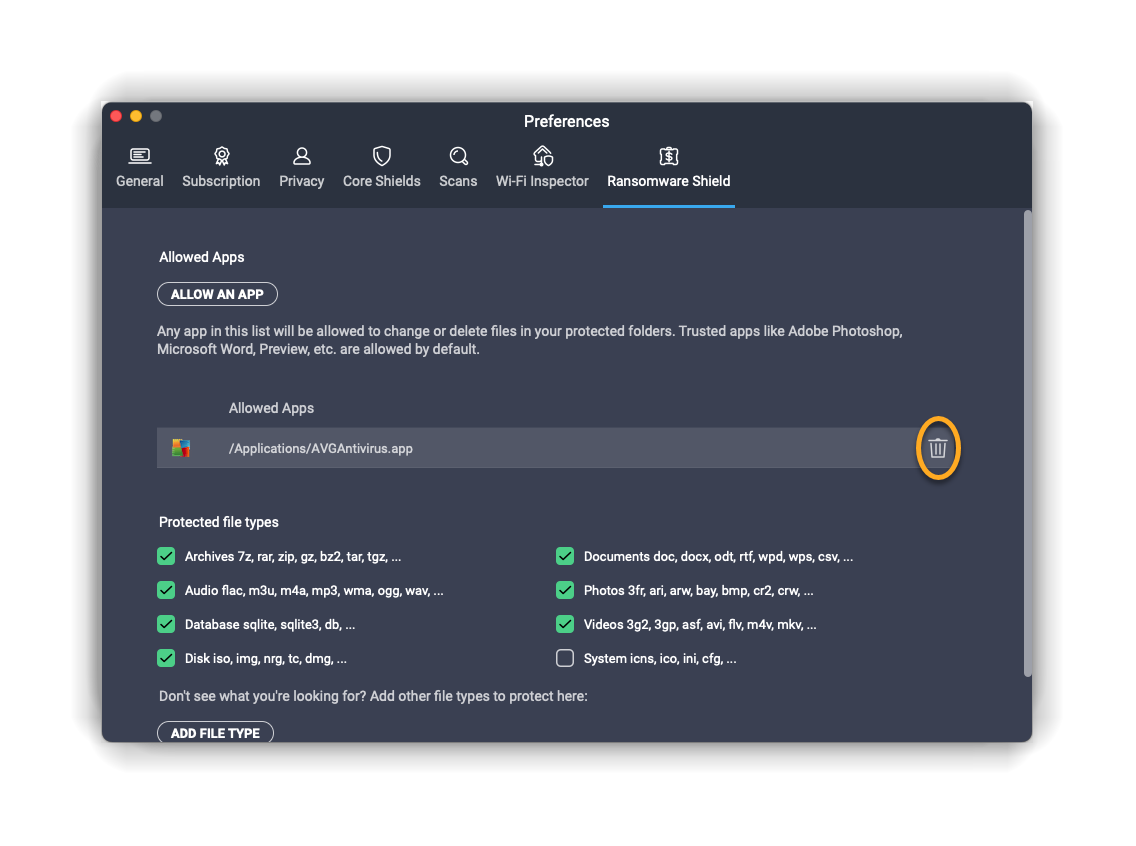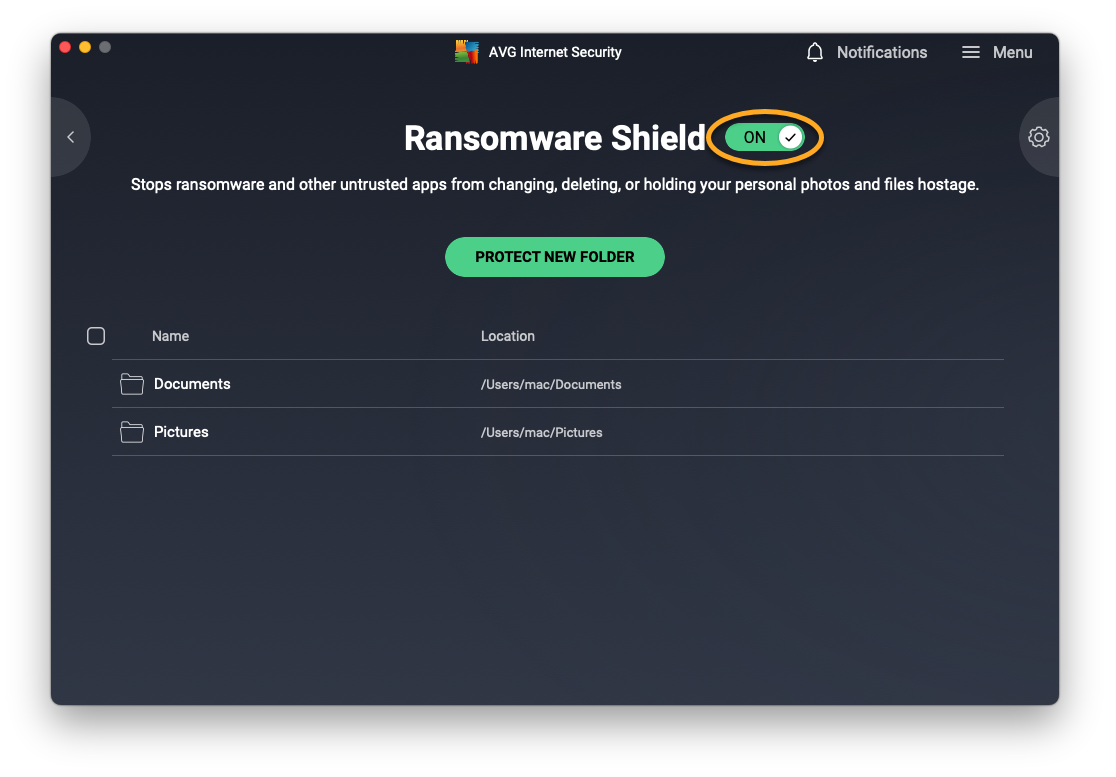Ransomware Protection secures personal photos, documents, and other files from being modified, deleted, or encrypted by ransomware attacks. This feature enables you to protect specific files from untrusted applications and specify which applications are allowed or blocked from accessing your protected folders.
Add or remove protected folders
By default, Ransomware Protection automatically secures folders where your personal data is usually stored (such as your Documents folder). All subfolders of the protected folders will also be included. To add or remove folders from the Protected folders list:
- Open AVG AntiVirus and click the Computer tile.

- Click Open above Ransomware Protection.

- Add or remove a selected folder:
- To add a folder: Click Protect new folder, find the folder you want to protect, tick the box beside it, then click OK.

- To remove a folder: Hover your cursor over the folder's panel and click the X icon, then click Yes, stop protecting.

- To add a folder: Click Protect new folder, find the folder you want to protect, tick the box beside it, then click OK.
Specify protected file types
Select which file types to secure in your protected folders:
- Open AVG AntiVirus and click the Computer tile.

- Click Settings (the gear icon) in the top-right corner.

- Select Basic protection ▸ Ransomware Protection in the left panel.

- Scroll to File types to view which file types are secured in your protected folders. All listed file types are selected by default. Untick the box next to a file type to deselect it. Additionally, you can add a file type not listed, by typing it into the box below the default list.

Manage Ransomware Protection behavior
You can specify how Ransomware Protection behaves when an application attempts to access files in your protected folders. To adjust the sensitivity:
- Open AVG AntiVirus and click the Computer tile.

- Click Settings (the gear icon) in the top-right corner.

- Select Basic protection ▸ Ransomware Protection in the left panel.

- Select an option under Select your preferred mode:
- Smart Mode (default and recommended setting): Ransomware Protection refers to a list of commonly used and trusted applications to determine which applications can modify files in your protected folders. If any applications that are not in this list attempt to modify files in your protected folders, you are notified and asked for permission.
- Strict Mode: If any applications attempt to modify files in your protected folders, you are notified and asked for permission every time (excluding those applications you have already added to your Blocked & Allowed apps lists). Selecting this option may result in frequent and potentially obtrusive alerts.

- When a Ransomware Protection pop-up notification appears, click Allow app to add the application to your Allowed apps list, or click Block app to always block it from accessing your protected folders.

For more information about managing Blocked & Allowed apps, refer to the following article:
Disable Ransomware Protection
Ransomware Protection is enabled by default, but can be disabled for troubleshooting purposes by following the steps below:
- Open AVG AntiVirus and click the Computer tile.

- Click Settings (the gear icon) in the top-right corner.

- Select Basic protection ▸ Ransomware Protection in the left panel.

- Click the green (ON) slider so that it changes to red (OFF), then select a time duration to disable Ransomware Protection.

- Click OK, stop to confirm.

Troubleshoot issues
Refer to the information below to troubleshoot common issues:
- Ransomware Protection does not appear in AVG AntiVirus: Ensure you are using the latest version of your AVG AntiVirus. To update AVG AntiVirus, go to
☰Menu ▸ Settings ▸ Update, and click Check for updates in the application section. - Ransomware Protection displays pop-ups too frequently: Ensure that Ransomware Protection behavior is set to Smart Mode. If Ransomware Protection is set to Strict Mode, AVG AntiVirus notifies you every time any application attempts to modify files in your protected folders (excluding those you have already added to the Blocked & Allowed apps lists).
- You cannot save files using an editing application: Ensure the application you are using is not in your Blocked Apps list. Alternatively, you can add the application to your Allowed Apps list.
Further recommendations
For more information about Ransomware Protection, refer to the following article:
Add or remove protected folders
By default, Ransomware Protection automatically secures your Documents and Pictures folders. All subfolders of the protected folders will also be included. To add or remove folders from the Protected folders list:
- Open AVG Internet Security and click the Hacker attacks tile.

- Click Open above Ransomware Shield.

- Add or remove a selected folder:
- To add a folder: Click Protect new folder, navigate to the folder, and click Open. If prompted, enter the password that you use when you start your Mac, then click OK.

- To remove a folder: Tick the box next to the folder you want to remove, then click Stop protecting. If prompted, enter the password that you use when you start your Mac, then click OK.

- To add a folder: Click Protect new folder, navigate to the folder, and click Open. If prompted, enter the password that you use when you start your Mac, then click OK.
Specify protected file types
Select which file types to secure in your protected folders:
- Open AVG Internet Security and click the Hacker attacks tile.

- Click Open above Ransomware Shield.

- Click Preferences (the gear icon) in the top-right corner.

- In the Protected file types section, you can view which file types are secured in your protected folders. Tick the box next to the file types you want Ransomware Protection to protect, or untick any file types that you do not want protected by Ransomware Protection.
 AVG AntiVirus will notify you any time an application tries to modify files in your protected folders (excluding those you have already added to the Allowed Apps list).
AVG AntiVirus will notify you any time an application tries to modify files in your protected folders (excluding those you have already added to the Allowed Apps list). - If prompted, enter the password that you use when you start your Mac, then click OK.

- To add a file type that is not listed, click Add file type.

- Enter the file type extension, then click Save.

- If prompted, enter the password that you use when you start your Mac, then click OK.

Manage the allowed apps list
Applications on the Allowed Apps list are authorized to access the files in your protected folders. This enables you to keep your files protected by Ransomware Protection and at the same time access the files using only trusted applications.
- Open AVG Internet Security and click the Hacker attacks tile.

- Click Open above Ransomware Shield.

- Click Preferences (the gear icon) in the top-right corner.

- Allow or remove an application:
- To allow an app: Click Allow an app, then select the application and click Open. If prompted, enter your password that you use when you start your Mac and click OK.

- To remove an app: Hover your cursor over the application's panel in the Allowed Apps list and click the Trash icon. If prompted, enter your password that you use when you start your Mac and click OK.

- To allow an app: Click Allow an app, then select the application and click Open. If prompted, enter your password that you use when you start your Mac and click OK.
Disable Ransomware Shield
Ransomware Shield is enabled by default, but can be disabled for troubleshooting purposes by following the steps below:
- Open AVG Internet Security and click the Hacker attacks tile.

- Click Open above Ransomware Shield.

- Click the green (ON) slider. If prompted, enter your password that you use when you start your Mac and click OK. The slider changes to red (OFF), indicating that the shield is disabled.

Further recommendations
For more information about Ransomware Protection, refer to the following article:
- AVG Internet Security 23.x for Windows
- AVG AntiVirus FREE 23.x for Windows
- AVG Internet Security 20.x for Mac
- Microsoft Windows 11 Home / Pro / Enterprise / Education
- Microsoft Windows 10 Home / Pro / Enterprise / Education - 32 / 64-bit
- Microsoft Windows 8.1 / Pro / Enterprise - 32 / 64-bit
- Microsoft Windows 8 / Pro / Enterprise - 32 / 64-bit
- Microsoft Windows 7 Home Basic / Home Premium / Professional / Enterprise / Ultimate - Service Pack 1 with Convenient Rollup Update, 32 / 64-bit
- Apple macOS 12.x (Monterey)
- Apple macOS 11.x (Big Sur)
- Apple macOS 10.15.x (Catalina)
- Apple macOS 10.14.x (Mojave)
- Apple macOS 10.13.x (High Sierra)
- Apple macOS 10.12.x (Sierra)
- Apple Mac OS X 10.11.x (El Capitan)
